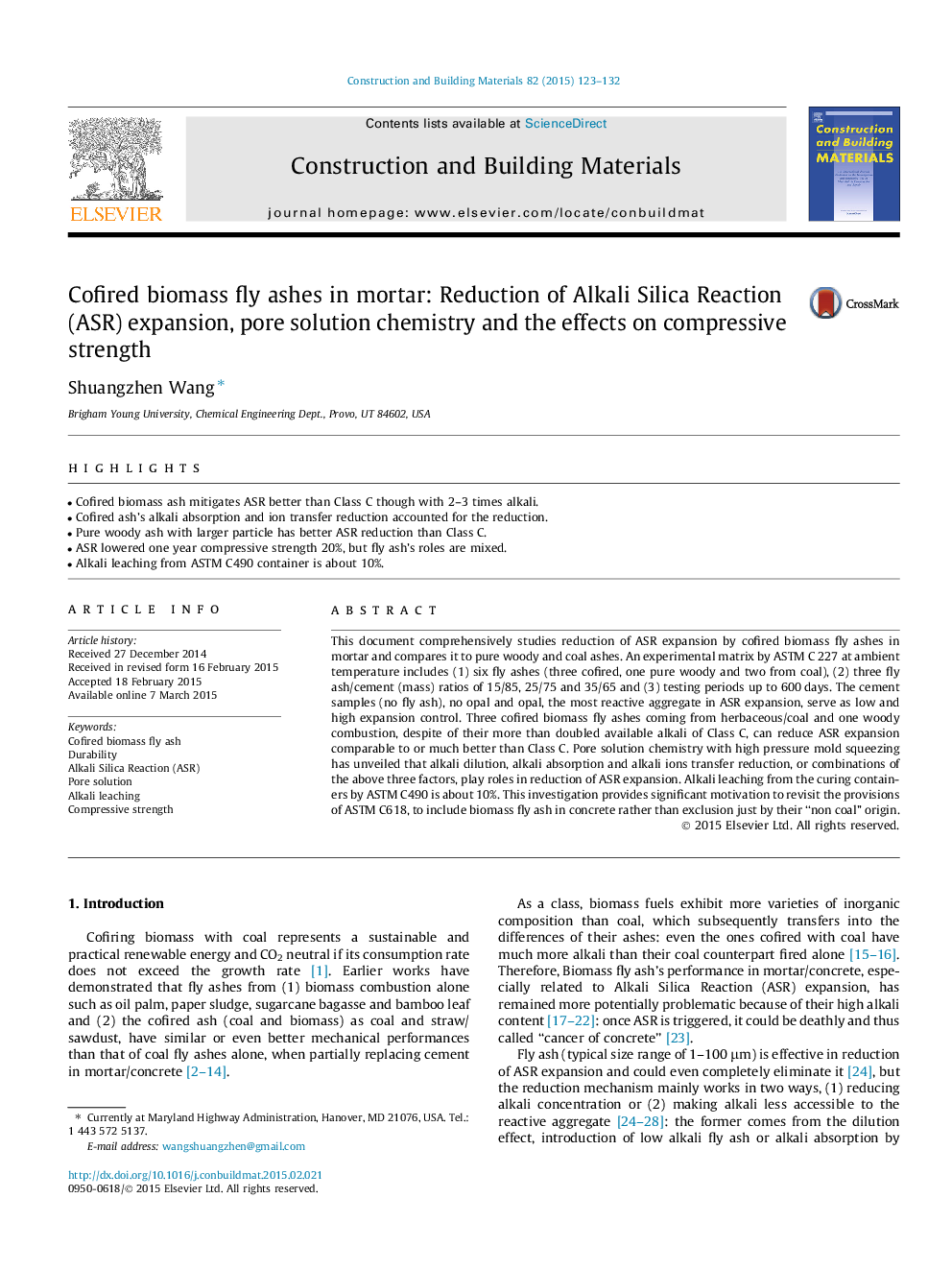| Article ID | Journal | Published Year | Pages | File Type |
|---|---|---|---|---|
| 256920 | Construction and Building Materials | 2015 | 10 Pages |
•Cofired biomass ash mitigates ASR better than Class C though with 2–3 times alkali.•Cofired ash’s alkali absorption and ion transfer reduction accounted for the reduction.•Pure woody ash with larger particle has better ASR reduction than Class C.•ASR lowered one year compressive strength 20%, but fly ash’s roles are mixed.•Alkali leaching from ASTM C490 container is about 10%.
This document comprehensively studies reduction of ASR expansion by cofired biomass fly ashes in mortar and compares it to pure woody and coal ashes. An experimental matrix by ASTM C 227 at ambient temperature includes (1) six fly ashes (three cofired, one pure woody and two from coal), (2) three fly ash/cement (mass) ratios of 15/85, 25/75 and 35/65 and (3) testing periods up to 600 days. The cement samples (no fly ash), no opal and opal, the most reactive aggregate in ASR expansion, serve as low and high expansion control. Three cofired biomass fly ashes coming from herbaceous/coal and one woody combustion, despite of their more than doubled available alkali of Class C, can reduce ASR expansion comparable to or much better than Class C. Pore solution chemistry with high pressure mold squeezing has unveiled that alkali dilution, alkali absorption and alkali ions transfer reduction, or combinations of the above three factors, play roles in reduction of ASR expansion. Alkali leaching from the curing containers by ASTM C490 is about 10%. This investigation provides significant motivation to revisit the provisions of ASTM C618, to include biomass fly ash in concrete rather than exclusion just by their “non coal” origin.
